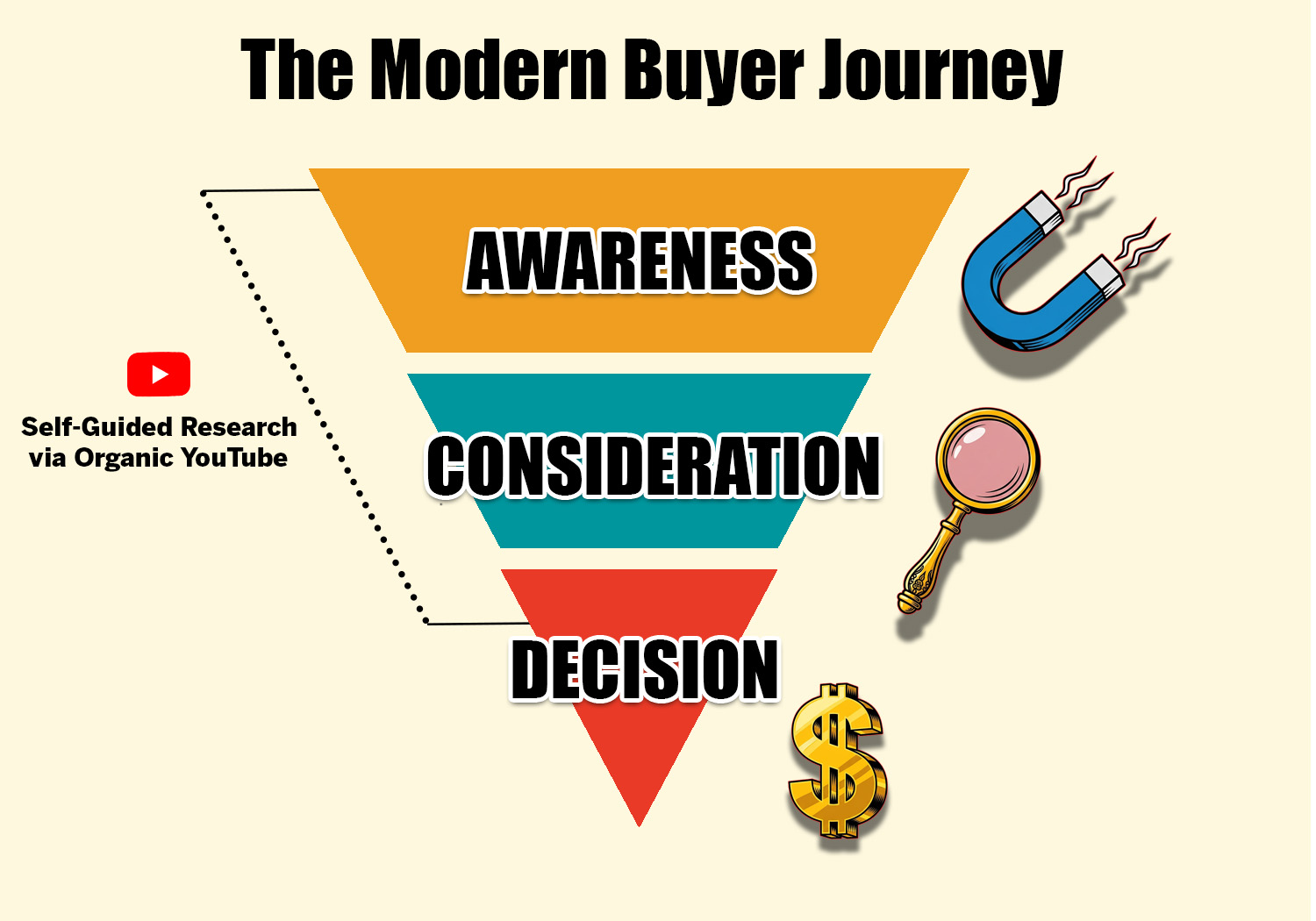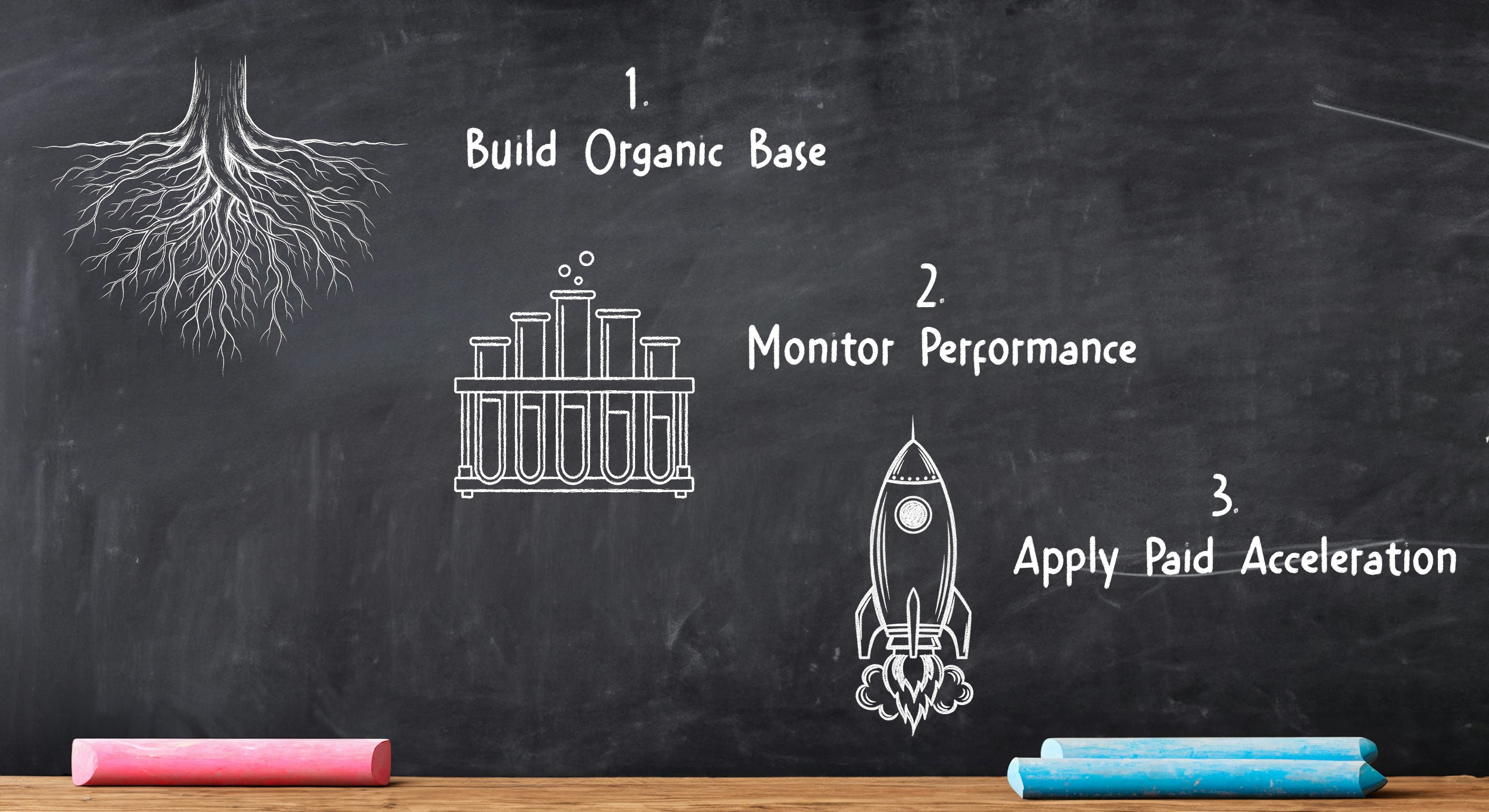Are you pouring money into YouTube ads, hoping for leads, only to see zero impact? The problem might not be your ads but rather a foundational element you're overlooking: your organic YouTube presence. Many businesses make the mistake of separating paid and organic strategies, leading to wasted ad spend and missed opportunities. By strategically blending these two powerful forces, you can generate high-quality leads, lower your customer acquisition cost, and accelerate your sales pipeline.
The core difference between organic and paid YouTube marketing lies in their approach to audience reach and immediate impact. Organic YouTube marketing focuses on building a long-term, sustainable presence by creating valuable content that naturally attracts viewers through search and recommendations. This strategy cultivates trust and authority over time without direct advertising spend per view. In contrast, paid YouTube marketing involves running advertisements to achieve immediate reach, target specific demographics, and drive quick conversions, relying on a direct investment for exposure.
Organic YouTube, often viewed as the slower, less glamorous sibling to paid ads, is actually the unsexy but essential foundation for any successful YouTube marketing strategy. It's how you build long-term value, establish trust, and genuinely connect with your audience.
Consider your own behavior on Google: you likely unconsciously ignore sponsored links and click on organic listings. This preference for organic results extends to YouTube. When people are actively seeking solutions or information, they prefer to self-educate. Your organic YouTube presence – through informative videos, helpful tutorials, and insightful discussions – allows prospects to do their homework and build confidence in your brand.

This content, once published, keeps working for you, attracting views and conversions without recurring spend. This is evergreen content, and it delivers a significant long-term return on investment (ROI). Moreover, video content builds trust faster than text, which is ideal for shortening notoriously lengthy B2B sales cycles. It’s about demonstrating thought leadership, building community, and attracting buyers who are actively seeking solutions.
Many businesses make a critical error by treating their YouTube channel like a "video graveyard." They simply dump ads, podcasts, webinars, and product demos onto their channel without optimizing the content for YouTube's algorithm. This content isn't designed to be found through search or, more importantly, to be shown broadly on people’s recommended feeds. The result? Low views, no leads, and a channel that sits there doing nothing for the business. This unoptimized approach completely undermines the potential of organic growth.
An A/B test conducted by Pranav Piyush at Paramark - a firm specializing in statistically significant experiments for B2B companies - revealed a groundbreaking insight into YouTube's "split personality." These aren't theoretical case studies; these are real-world results that should fundamentally change how you think about your YouTube ad spend.
Two different companies ran YouTube ad campaigns with identical geo-holdout methodologies:
The crucial difference? Company B had a strong organic YouTube presence. Company A had none.

The company with an existing, robust organic presence saw their paid ads fail. And the company starting from scratch, with no organic presence, saw success. Why? Because the algorithms, and more importantly, user behavior, are different.
When companies like Company B, with their unoptimized organic content, spend on ads, they run a massive risk. People click their ad, land on their channel, see a disorganized repository of unengaging content, lose trust, and never become a lead or customer. Company A, having no organic footprint, needed the paid ads to introduce their content, and there was no confusing or off-putting organic channel to detract from the paid message. This is crucial: your organic presence can either amplify or undermine your paid efforts. You need to understand your unique situation.
If organic is your foundation, when do you bring in the big guns with paid advertising? Paid marketing is about immediate results, precision targeting, and breaking through the noise. It's not a replacement for organic; it's an accelerator.
Paid ads are essential for guaranteeing placement and reaching audiences that your organic efforts might miss. Got a high-performing video that's crushing it organically? Amplify it with paid ads! You already know that content resonates. Paid campaigns can jumpstart awareness and conversions almost instantly. In fact, 88% of marketers report a positive ROI from YouTube ads when used correctly.
Think about using paid YouTube to:
The most successful brands in 2025 are those that understand this delicate balance. They leverage organic for long-term authority and trust, and deploy paid to accelerate results and target precise segments.
The key to YouTube success in 2025 isn't choosing between organic or paid; it's understanding how to blend them strategically. Here's how to do it:

Think of your organic content as the delicious meal you've painstakingly prepared, and your paid ads as the dinner bell inviting everyone to the table. Don't just ring the bell without a meal ready! Continuously test, learn, and optimize your mix based on your goals, your audience, and platform dynamics.
To recap: Organic YouTube marketing builds long-term trust, lowers your CAC, and generates evergreen leads. Paid YouTube marketing delivers immediate results and targeted reach. But using them effectively means understanding their interplay. Don't make the million-dollar mistake of ignoring your organic foundation or blindly spending on ads without a strategy. Audit your organic presence, then use paid to amplify what already works. This isn't about choosing sides; it's about intelligent integration. It's about getting data-driven results that impact your pipeline, your CAC, and ultimately, your revenue.
Ready to improve your YouTube channel so you can take advantage of this mixed strategy? Then you absolutely need to read this article next: Why Your B2B YouTube Channel is Failing (and How to Fix It). It dives into the common reasons why B2B channels fail and provides actionable tips on how to fix them.